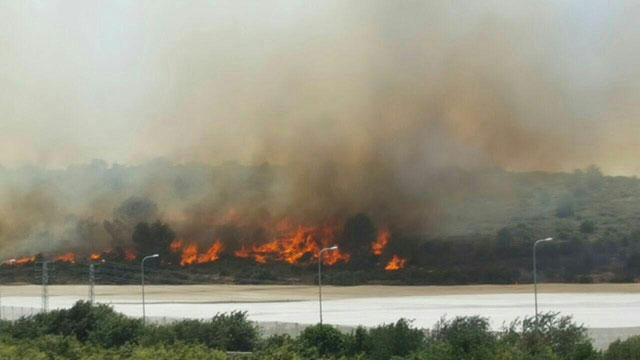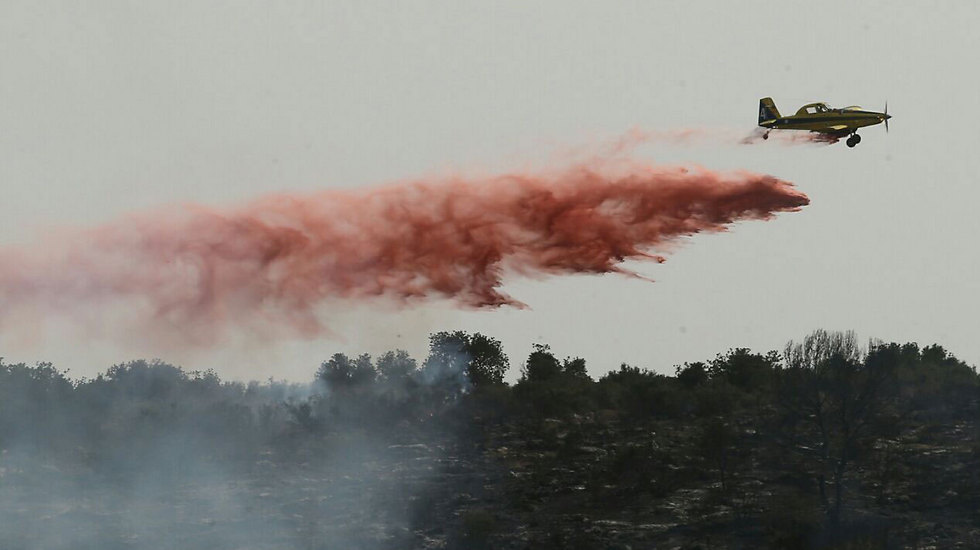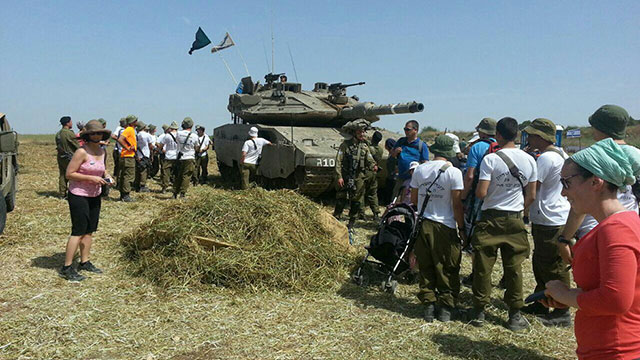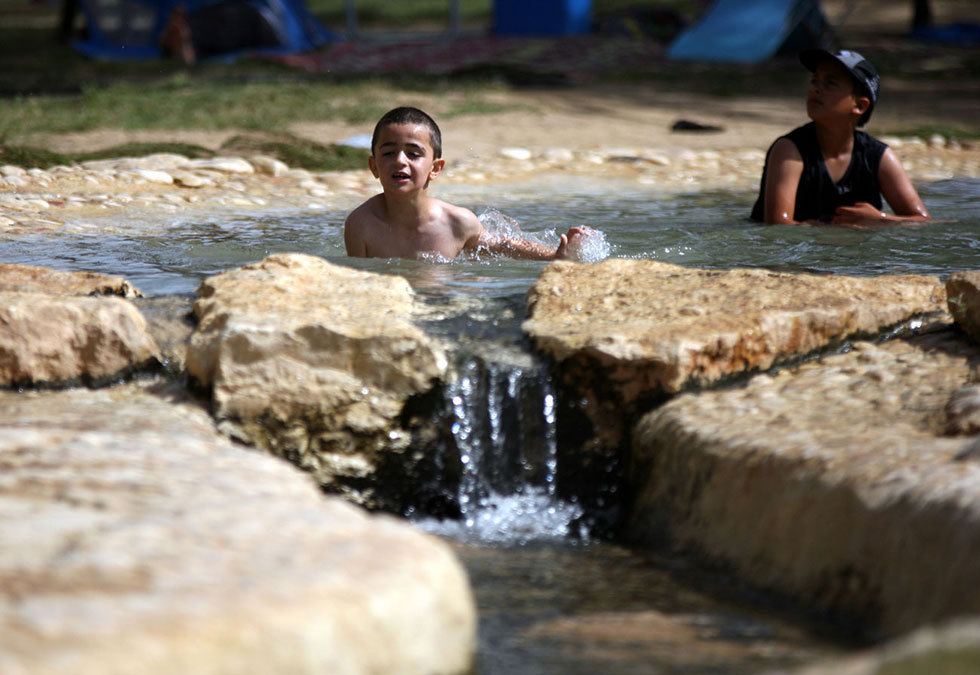
Several forest fires broke out across Israel on Tuesday as the country was hit by a heat wave, with temperatures reaching 40 degrees Celsius in the Tel Aviv area.
Fires were reported all across the country, including in the Western Galilee between the town of Shlomi and Kibbutz Matzuva and also in the city of Nahariya, where two trees burned down near residential buildings; in the Upper Galilee near Kibbutz Gadot; in Kibbutz Yizre'el near Afula; on Highway 1 connecting Jerusaelm and Tel Aviv, close to Kibbutz Gamzu, and also in the city of Jerusalem; next to the railway between Be'er Ya'akov and Lod, and additionally between Ramla and Kibbutz Na'an.
Ten firefighting crews from around the Western Galilee and four firefighting planes from KKL-JNF are working to put out the blaze near Shlomi on route 70. Firefighters reported that dozens of acres have already burned, as well as banana plantations near Shlomi, but there is no danger to the nearby towns. Meanwhile, electricity has been cut off to Matzuva and the surrounding communities of Kibbutz Kabri and Moshav Avidon. The fire is now reported to be under control.
Fire broke out near Kibbutz Gadot in two different locations, not far from a white water rafting site. Four firefighting teams from the upper Galilee were dispatched to the scene and reported heavy smoke. All visitors in the area, on the bank of the Jordan River, were evacuated.
Firefighting teams also battled a bush fire at a junkyard on the eastern side of the village of Sheikh Danun in the western Galilee.
Due to the fact that the fires in the Lod and Ramla areas occurred close to rail lines, train service was disrupted in different areas of the Shfela region, Jerusalem, and Be'er Sheva.
A fire broke out on the Mount of Olives in Jerusalem, but was quickly brought under control. Meanwhile, a second fire broke out in the Shalom Forest next to Mount Herzel in the far west of the capital. A house in the neighborhood of Abu Tor was evacuated due to smoke.
Two firefighting planes and four firefighting crews from Afula were sent to fight a bush fire near Kibbutz Yizre'el, putting it out. The fire was stopped several dozens of meters from the homes of the kibbutz, and some 100 acres were burned.
The blaze in Kibbutz Yizre'el was started due to visitors to the area lighting a barbeque, much like the blaze in Birya Forest on Monday.
Following an investigation into the Birya Forest fire, it was revealed that the cause of the fire was a couple who were attmpting to light a barbeque with their four children. Sparks from the barbeque flew out and started a small fire which the family immediately tried to put out with the water and juice they brought with them for their picnic. They also immediately called police and fire services.
KKL-JNF forester Eli Hafuta said that all of the KKL-JNF firefighting crews are on high alert. "Firefighters, fire inspectors on all terrain vehicles (ATVs), and volunteers are stationed at the parking lots of the parks. We sent in reinforcements after what happened in Birya and also as a result of the heat wave. Crews are going through the parking lots and checking to make sure that bonfires and barbeques aren't being lit inside the forests themselves, and are only being lit in permitted areas. We are operating from early in the morning until late at night."
Tens of thousands of visitors and massive traffic jams
The scorching heat, however, did not deter around 80,000 Israelis who visited nature reserves, national parks and the beaches all across the country.
The Israel Nature and Parks Authority said that the most visited sites in the country were water sites, such as the Ayun stream, HaBanim, Ein Prat, Ein Gedi, and Gan Hashlosha (Sahne).
The Authority also said that crowds were seen at the Nahal Snir Nature Reserve, the Tal Forest, and at the Ashkelon National Park.
Meanwhile, the Jordan River Park north of the Sea of Galilee was closed to visitors due to so many people arriving. Traffic jams stretching for miles were reported around the lake.
Thousands of tourists who were looking for a respite from the heat went to the natural pools in Eshkol Park in the Merhavim Regional Council.
5,000 people took part in a hike near Latrun organized by the Yad LeShiryon organization, which took place on the 100th anniversary of the invention of the tank. Yad LeShiryon is an organization for Armored Corps veterans.
Members of the tank division led the hike, and explained to the participants about the evolution of the tank from its beginnings in 1916 to its role in modern warfare today. The hike included a children's area, and presentations of tank and artillery weaponry, firefighting equipment, Magen David Adom equipment, and more.
Almost 75,000 visitors came to the rock sculpture festival at Monfort lake in Ma'a lot in the first three days of Chol Ha'moed (the intermediate days of Passover). 11 sculptors from Israel and around the world are featured at the festival
The flock of vacationers also led to massive traffic jams, including on Highway 1, Highway 2, Highway 4, Ayalon Highway and in other routes in northern Israel.
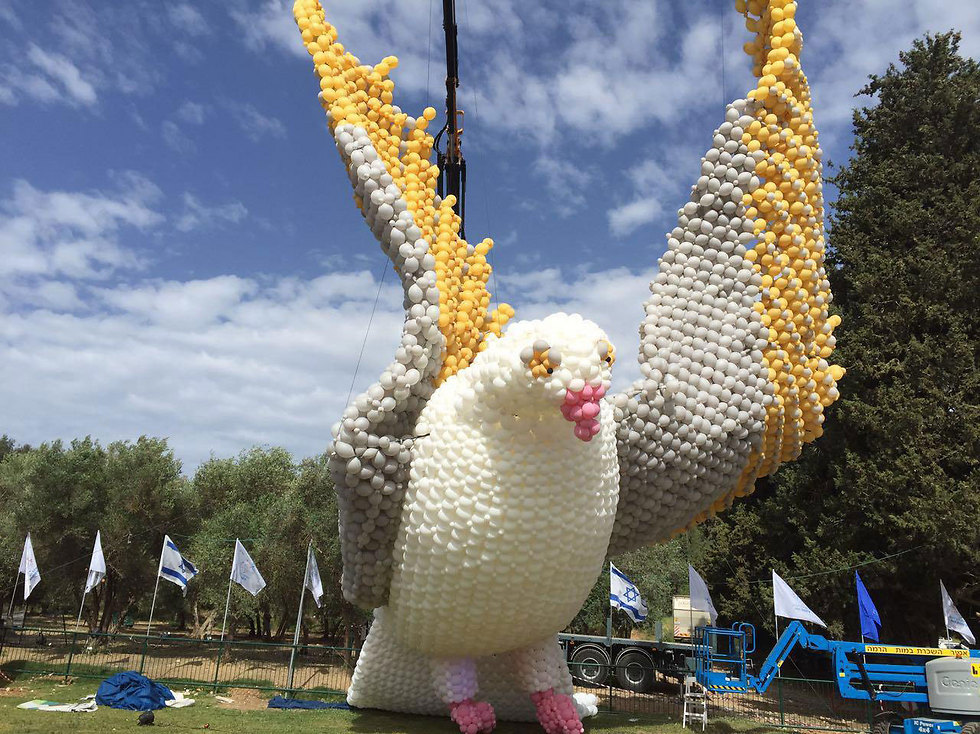
Meteo-Tech weatherman Tzachi Waxman said the highest temperature measured was in the Tel Aviv metropolitan area - 40 degrees Celsius (104 Fahrenheit), while Gedera and Kfar Saba saw 39 degrees (102.2 Fahrenheit).
The extreme weather also had a negative effect. At Nahal El Al in the Golan Heights, an Israeli woman around 30 years old suffered heat stroke and dehydration, while the search and rescue unit also extracted a 40-year-old woman from Jalaboun Stream, who was suffering from dehydration. Near moshav Haspin in the Golan, a 40-year-old Beit Shemesh resident was bit by a snake and suffered a light-to-moderate injury. He was evacuated to the Poriya hospital in Tiberias.
In the Negev, volunteers from the rescue unit were called to extra an Israeli man suffering from dehydration from Ma'ale Hod Akev.
The Meteo-Tech company reported that the weather will be torrid and may be accompanied by haze. During the day light rain is also likely. Temperatures will decrease in the evening, at which time heavy winds and haze are expected.
In the evening, winds will reach 50 kph. Medium to heavy heat is expected on the coastal plain, in the north and in the Negev. Heavy to extreme heat is expected in the eastern valleys.
On Wednesday, there will be a significant drop of 10 to 15 degrees Celsius.
Ahiya Raved, Reut Rimerman, Roi Yanovsky, Matan Tzuri, ilana Curiel, Hassan Shaalan and Ayala Goshen contributed to this report.













